- Home
- Rebecca Levene
Grand Thieves & Tomb Raiders Page 2
Grand Thieves & Tomb Raiders Read online
Page 2
Scott won. He found an instruction that allowed two terminals to look at, and write to, this shared memory without the usual permission. The pair wrote a piece of code to prove their concept – and when text was typed on one terminal, it appeared on another. They looked at their work in awe – it was a small step, but in the locked down, centrally controlled, permission-oriented world of mainframe computers, this was a significant breach. For the first time, users could interact with each other.
Trubshaw’s other discovery occurred nearly a year later, and in a sense was far more mundane. As a curious programmer at a time when programming resources were scarce, he devoured examples of code wherever he found them. To help, he wrote a clever program that kept tabs on every file that was saved on the university’s drives. Usually this turned up nothing, but one morning in late 1978 it produced a list of files that Trubshaw immediately recognised.
He was an avid player of an early computer game called ADVENT, short for adventure. It had originated in the US, and was played almost entirely within universities. The game worked like an interactive book: the text was written in the second person, advising the player on what was happening, and on what they could see. The player then entered simple commands – no more than a verb and a noun – and the computer would write another paragraph describing the impact of their actions. Although a simple concept, it was applied with brilliant diversity, producing a virtual world of compelling puzzles.
What Trubshaw’s virtual watchdog found were the source files for ADVENT. These differed from the program that most people used to play the game, which had been compiled into a form the computer could read, but which scrambled the original programmers’ code. The source files gave the complete code listing as it had been written, with comments from the programmers who had put it together. Trubshaw immediately realised that he had stumbled upon a coder’s goldmine, and within minutes the files had been discreetly copied to his personal tapes.
Although it was a joy to look at this famous code, it was also disappointing. As the game had become more popular, it had been expanded and developed by different people, and the code that Trubshaw saw was, as programmers call it, a ‘kludge’: a functional but messy compound of different authors’ work. Routines intended to achieve one task were stretched beyond recognition, and elegant ideas had ugly extensions grafted on to fulfil the ambitions of later contributors. Yet Trubshaw was encouraged by this: he knew he could do so much better. In that year he had learned how to let two computer users talk to each other, and decided that he was easily qualified to write an adventure game. In between these two events, he met Richard Bartle.
Bartle arrived at Essex keen to write more programs, and needed access to the mainframe computer. At the time, the only way to get this was to become a member of the Computer Society, and at first he didn’t even manage that, having missed its stand at the Societies Bazaar for new undergraduates. When he eventually tracked the society down, he found a ‘hacker culture’ of kindred spirits, and amongst them Roy Trubshaw. ‘We delighted in programming for its own sake, and intuitively saw the power and potential that computers had to offer,’ Bartle recalls. ‘It was inevitable that we would meet, just as it was inevitable that we would meet every other half-decent programmer at the university.’
Unusually, Essex University gave its computer society the resources to use its precious computers for non-academic purposes, and hardcore users, Bartle and Trubshaw prominent among them, could gain regular access. Over time they would have to fight off various attempts to restrict their access, but their right to use the computers for non-academic work prevailed – ‘having fun’ was part of the university’s computing culture. The pair didn’t have the free rein they might have done at a cutting-edge US university, but Essex was certainly as supportive.
Bartle’s arrival exposed Trubshaw to a gaming culture he had barely encountered before. Encouraged by Bartle, he had already started creating a text adventure game that used some of the characteristics of Dungeons & Dragons by the time he discovered the ADVENT source code, and he already knew how to connect users in real time. It may have been serendipitous that the pieces for multiplayer adventure gaming had fallen into place, but they had landed in the lap of an excellent programmer.
The pair set about building a multiplayer adventure with the energy of undergraduate students. Trubshaw’s time-limited access to the computers meant that he developed the code in his head, and then wrote it down longhand – a discipline that made it concise and very efficient. Keying in code involved using punchcards – a system of recording programs through holes in index cards – and correcting errors meant sending these to the computer in giant batches. It was immensely time-consuming, and throughout all of this Trubshaw had to complete enough of his genuine studies to keep him from being thrown off the course.
But it worked. Trubshaw based his first tiny virtual world on his own house, and the Multi User Dungeon was born. Although Trubshaw and Bartle’s peers were used to text games like ADVENT, MUD had something entirely new. If two players stood in the same room at the same time, the description would tell each of them that they could see the other and, vitally, their instructions would allow them to interact with one another. What had once been a game where a single player faced the challenge of a pre-programmed environment, much like Bartle’s Solo Dungeon, was now something far more powerful. MUD could facilitate competition or teamwork, enable mutually supportive or disruptive strategies, or simply allow communication between players. It could be a social network.
At that time, though, it was yet to be any of these things. Bartle had been looking over Trubshaw’s shoulder while MUD was being written, but now he came on board officially, and set about both building a full game, and harassing Trubshaw to expand the feature set. He had an instinct about how role-playing adventures should work, and the tools needed to make them happen on a computer.
Bartle drew heavily from his past as a games master in tabletop games to create the rules for the new world he was building, but today he is hesitant to give any one title much credit for this influence, even Dungeons & Dragons. ‘The D in MUD stands for “Dungeon”, which as DUNGEN was the name of the version of [the text adventure] Zork that was kicking around at the time . . . but there was nothing remotely D&D about the game as Roy wrote it.’ The games may seem similar to outsiders, but the distinction rings true in the details: MUD included none of the monsters, classes or races – such as orcs or elves – that characterise D&D. The debt owed to other computer games was also of only slight importance: ‘I’d written more computer games of my own than I had encountered by other people back then,’ Bartle says. ‘Really, there were not a lot around!’
As the first in a new genre at the dawn of computer games, MUD was staking out plenty of unclaimed territory. While its apparent innovations were technical, there was no template for the game design, and Bartle was taking a philosophical approach. He envisaged an open-yet-closed environment, where the gameplay should be emergent, allowing improvisation yet remaining challenging. Some constraints couldn’t be avoided: players were to have freedom, but not complete freedom. They would have powers and characteristics, but these could not be unlimited. In setting out these rules, a game designer, consciously or not, establishes a ‘constitution’ for their world. And where others might have piled on rules in an undirected way, Bartle and Trubshaw gave their world political intent.
‘Roy and I had an unspoken understanding of what MUD was about,’ says Bartle. ‘To use a cliché, we were singing from the same hymn sheet.’ Part of this was the culture of hackers to which they each belonged – they respected and admired programming ability. This was both a leveller and hard to fake, and egalitarian views with a meritocratic slant seemed natural. ‘In this small world of idealistic programmers, people were judged by – to lift a phrase from Martin Luther King – the content of their character,’ Bartle says. ‘In the world beyond, they weren’t.’
But as well as embodying a
n idealised programmer culture, MUD’s design was also a reaction to the country’s social politics. For Bartle and Trubshaw ‘the world beyond’ meant a Britain that was riven with inequalities, in particular, perceptions of class. ‘Roy and I were not from wealthy backgrounds . . . we had and still have unfashionable accents,’ Bartle says. ‘We were constrained by what society declared must be true about us, rather than what really was true about us.’
Programming had given them a taste of freedom, though, and they revelled in it. From there, it seemed a short step to give freedom to other people too, and with MUD they had a way to deliver it. ‘I don’t know that we ever discussed it in such terms, it was just emergent from the culture,’ Bartle says. ‘Computers gave us the chance to be a force for good.’
Games can be a natural harbour for meritocratic ideas, with clear objectives and rewards. But it was not inevitable that MUD would be a game, and initially it was planned as an interactive world hosted on the computer, albeit with the hope that a sense of purpose would emerge from the rules governing the nascent cyber-society. But the technology that Bartle and Trubshaw relied upon for linking players – a primitive mesh of early computer networks – predated the internet, and large numbers of players didn’t look likely. It meant they would not be able to achieve the critical mass of players to give the required ‘sense of purpose’, and they concluded that they would have to ‘gamify’ MUD, using the word long before it became adopted by marketers.
To create a sense of purpose in the game, they needed a matrix of risks and challenges that players could overcome to earn rewards – a technique that would later come to be known in the industry as an ‘achievement system’ – and this became the basis for quietly giving the game a political position. Bartle considered various rewards, and each suggested a different bias. ‘What did I want to use the advancement mechanism to say?’ he recalls thinking. ‘If I’d chosen equipment, which is how most of today’s major MMOs handle the endgame, then I would have been endorsing materialism, a subject I was neutral on. If I’d chosen a skill system, which was breaking through in the face-to-face RPGs of the time, I’d have been saying that practice was more important than imagination, which I didn’t believe.’
He settled on levels – allowing players to earn ranks, as a soldier progressing through the army would. In itself, this was not an innovation – numbered levels had existed in role-playing games for some time, and Bartle would certainly have been aware of them from his experience with Dungeons & Dragons. But he is adamant that he chose this set-up to express a principled stance: to invert the power of British class labels. ‘If I picked a levels system, I would be saying that people were arranged in strata,’ says Bartle of his choice, ‘which I vehemently disliked because in real life I was a prisoner of the stratum in which I was born. The difference here, though, was that people could rise through strata! They could become who they really were, not whom society determined they should be! Yes! That was it!’
So the game was built, even from the early stages, with a subtle motive: to show the iniquities of the class system into which the two had been born, and to present another, idealised society. In their game, all that stopped players from rising through the classes was their own ability. MUD was the medium Bartle and Trubshaw chose to say unpalatable things about the real world.
MUD was a long way from being complete when it was time for Trubshaw to take his finals. At the same time, the DEC-10 computer that housed all their work failed, so he abandoned his plans to finish the code, passed the keys to his virtual dungeon to Bartle, and left to get married.
Bartle worked hard to add to this ‘crucial’ core of the code. He tied up loose ends and eliminated bugs, and added a final few essential features, including allowing users to play as women. It took dozens, perhaps hundreds of hours, but at last MUD was ready.
On the surface MUD looked like any other text adventure: a paragraph of writing would describe a scene, and the computer would then wait for an instruction from the player, a protagonist in the game’s story. With each command, another sentence or two would appear, and the narrative would unfold. It was silent and picture-less: all of the scenes were built in the imagination of the user. But while the best traditional text adventures were often witty and characterful, they were also static, solipsistic affairs, moving only as quickly as the player pondering the puzzle allowed. There was no sense of another presence in the game, other than perhaps an abstract notion of the designer.
But MUD was a real-time experience enriched by the knowledge that other players were in the world with you. They could help, chat or fight, but the real difference was the sense of company, however filtered. Simply knowing that a real person controlled the other character in the room, rather than an algorithm, gave the game weight and urgency. Your behaviour mattered, and its consequences were more exciting and unpredictable. As gamers had found when playing postal games, a semi-anonymous community could be compelling.
It was in the nature of academic computing circles to share their new technologies. University of Essex students had acquired games such as ADVENT and Zork from universities in the United States. When MUD was completed, Bartle returned the favour – the game was available to anyone. The design of the program required networked access, and it was also, it turned out, very addictive. The University of Essex became a globally popular destination for the embryonic gaming scene, and eventually access to MUD was restricted to night time hours to reduce the load on its system. As Bartle puts it, ‘It wasn’t all that important that we could occasionally get through to overseas computers. What was the bigger deal was that people on overseas computers could get through to ours.’
MUD became a phenomenon. The computing world was still small enough that if you were involved, you would probably have tried playing it, or almost certainly knew someone else who had. Some gamers became obsessive: people joined computer clubs solely to take part in MUD, and it wasn’t uncommon for computing students to find that they had spent their entire allowance of mainframe access playing the game.
Over the years, as it grew in popularity and the technology became more widespread, MUD became a genre: clones and derivatives popped up in other universities, sometimes with twists on the name: MOO, MUSH, MUCK and so on. They came to be known collectively as MU*, and often borrowed the underlying technology of the original game.
By 1984, home computing was becoming established in Britain, but the technology needed for playing MUD was still out of the reach of most domestic users. Taking part in a game required a constant phone connection, the cost of which was prohibitive for all but the most affluent, or for those using someone else’s line. Despite the computer game market flourishing on home machines, MUD was stuck on its own parallel, much slower, track.
But networking technology was developing quickly, and in 1984 the government privatised British Telecom, sole supplier of telephone connections at the time. Freed from state control, the new company was eager to expand into new markets, and bringing the emerging computer networking technologies into the home seemed an ideal venture.
The idea of linking MUD to the new telecoms market came from an unusual place. Simon Dally had been involved with the same gaming ’zine scene as Bartle in the seventies, coming to know him through Sauce of the Nile. A few years older than Trubshaw and Bartle, he had already established himself as a successful editor, responsible for championing the best-selling Henry Root Letters through a doubtful publisher. He was enthusiastic about the prospects for MUD, and encouraged its two creators to join him in forming a company to exploit it.
They called it MUSE, for Multi-User Simulated Environment, and set about shopping around their creation. The original MUD game was available to users through the earliest dial-up services, Compunet in the UK, and CompuServe in the US. These were slow and painfully expensive for home users, but they worked, and when Bartle and Trubshaw’s technology was ready for another iteration, and with BT hungry for new outlets, an exclusive deal for M
UD 2 was struck.
BT may have been enthusiastic, but the company was also desperately disorganised. Privatisation had liquefied the management structures, and although the MUSE team had been introduced at the board-level, repeated restructurings saw them passed from one department to another, on each occasion a little further down the food chain. After several moves, MUSE found a more sympathetic home with Prestel, a BT company that ran its early iteration of the Internet. The code was rewritten, hardware was purchased, and the team were set to go. And then their run of bad fortune started in earnest.
Simon Dally had been suffering from mental health issues, and in 1989 he sadly committed suicide. His behaviour had been erratic for some time, and the company’s finances had been left in a disastrous state. Trubshaw and Bartle were obliged to buy his share of MUSE from his inheritors to retain control of the company and its assets, vital for continuing their business.
Meanwhile BT took fright, and MUSE’s project was downgraded yet again. The government ran a Youth Opportunities Programme, intended to train unemployed and unskilled teenagers for the workplace by giving them experience with large employers. BT assigned one of these trainees to manage the MUSE relationship – it was he who eventually agreed their contract. ‘It was a gradual decline,’ muses Bartle, ‘from speaking to board-level directors to being signed off by a youth opportunities employee.’
MUSE stayed proactive, issuing licences across Britain and the US wherever they hadn’t already been allocated. But with such rapid expansion, perhaps friction should have been expected. The companies MUSE dealt with were a mixture of network infrastructure providers and amateur bodies pursuing a medium that they loved, and plenty of licensing deals or negotiations fell through, often while locking out the opportunity to approach other providers. MUSE was beset by an astonishing run of bad luck, and though the company mutated and adapted, it never quite thrived.

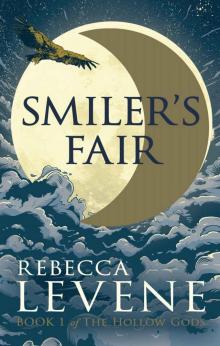 Smiler's Fair: Book I of The Hollow Gods
Smiler's Fair: Book I of The Hollow Gods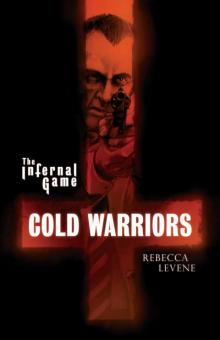 Cold Warriors
Cold Warriors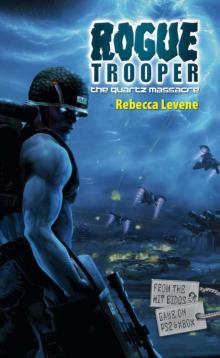 The Quartz Massacre
The Quartz Massacre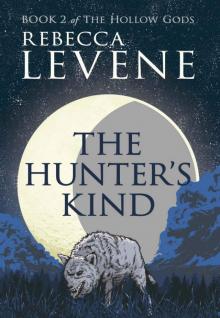 The Hunter's Kind: Book II of The Hollow Gods
The Hunter's Kind: Book II of The Hollow Gods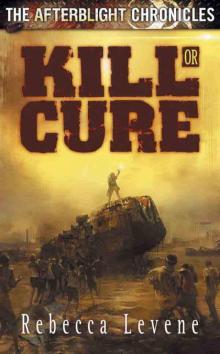 Kill or Cure
Kill or Cure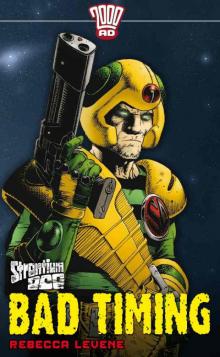 Bad Timing
Bad Timing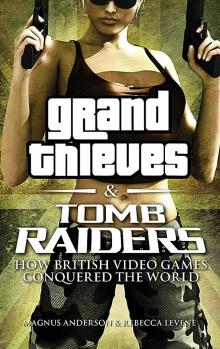 Grand Thieves & Tomb Raiders
Grand Thieves & Tomb Raiders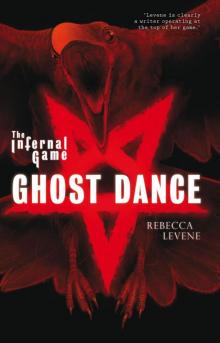 Ghost Dance
Ghost Dance Anno Mortis
Anno Mortis